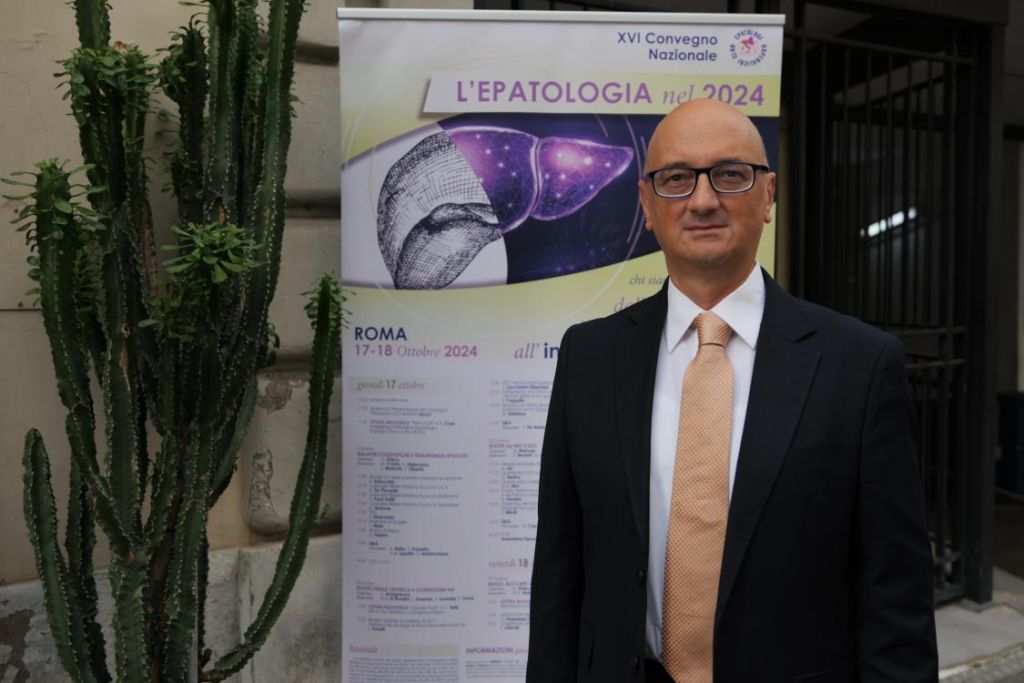ROME (ITALPRESS) – Diagnoses and hospitalizations related to dysmetabolic liver disease are increasing. In Italy, about one in four Italians suffers from fatty liver. The risk of severe liver damage is particularly high for those with obesity or diabetes. Among these, up to 15 percent develop complications such as cirrhosis or hepatocarcinoma. Numbers in perspective are particularly worrying: the estimate is that there may be a significant increase in cases of cirrhosis and hepatocarcinoma ten years from now. Already today, there are 20 thousand deaths each year in Italy from chronic liver disease. Recent studies in this regard were presented at the 16th National Conference of the Hospital Hepatologists Club – CLEO, organized by Strategie srl, which was recently held in Rome; the conference, entitled “Hepatology in 2024. Where we come from, who we are, where we’re going: from tradition to innovation to artificial intelligence,” addressed the major causes of hepatopathy (viral, autoimmune, alcoholic, dysmetabolic, genetic), as well as the most innovative diagnostic tests and therapeutic approaches.Dysmetabolic liver disease is linked to risk factors such as obesity, improper diet, diseases such as diabetes, alterations in triglyceride or cholesterol values; in some cases, genetic predisposition is also considered. These factors can result in hepatic steatosis and later steatohepatitis, which is steatosis associated with persistent liver inflammation promoted by the same accumulation of fat in the liver, which can then lead to cirrhosis and eventually liver cancer.”Epidemiology is changing, but it is not good news for the liver,” stresses Rodolfo Sacco, CLEO President and Director of Complex Structure of Gastroenterology and Digestive Endoscopy at the Azienda Ospedaliera Universitaria Policlinico di Foggia – Today, dominating the hepatological scene, in the face of a reduction in the prevalence of viral infections thanks to vaccines and treatments, there is an increase in dysmetabolic liver disease linked to obesity, diabetes mellitus, poor lifestyles, and alcohol consumption. These risk factors can promote fatty infarction of the liver, triggering mechanisms that lead to liver cirrhosis and hepatocarcinoma. This condition is now referred to by the English acronym MASLD – Metabolic Dysfunction-Associated Steatotic Liver Disease, often simply better known as fatty liver. The studies we will present at the CLEO Conference report an estimated prevalence of fatty liver in Italy of about 25 percent, reaching 50 percent in the most at-risk populations. Significant liver damage has a prevalence of 2% among those with fatty liver, rising to 15% in at-risk patients. It is a true systemic disease, as the patient often also suffers from obesity, diabetes, hypertension, comorbidities that also promote the onset of conditions such as sleep apnea, chronic renal failure, cardiovascular disease, and polycystic ovary syndrome in women. Fatty liver disease is thus established within a framework of systemic pathologies that have metabolic syndrome as a common denominator. In the context of fatty liver due to the sequential establishment of inflammatory processes, evolution toward cirrhosis and hepatocarcinoma may occur. “Nutrition and lifestyle represent the cornerstones from which to avert the evolution of dysmetabolic diseases, but not the only element to be preserved. “First of all, one must start with a proper diet, possibly inspired by the Mediterranean diet,” explains Rodolfo Sacco. “Secondly, one must fight sedentariness with continuous physical activity. Smoking and alcohol must be avoided. Prevention, moreover, must be systematic and start as early as elementary school, where educational programs, hours of physical education, and healthy meals must be structured. We then make an appeal to those who are familiar with obesity or these diseases, urging periodic checks of blood pressure, glycemic indices, and lipid values. Finally, pharmacology comes to the rescue: new molecules, especially for diabetes but also for obesity, make it possible to slow the evolution of hepatopathy toward cirrhosis and hepatocarcinoma.”
– Diessecom press office photo –
(ITALPRESS).

